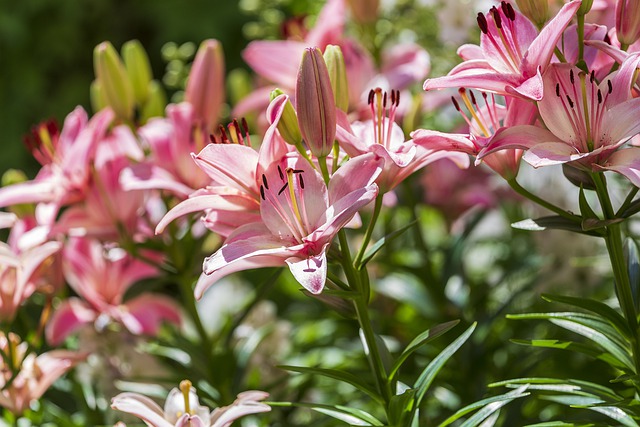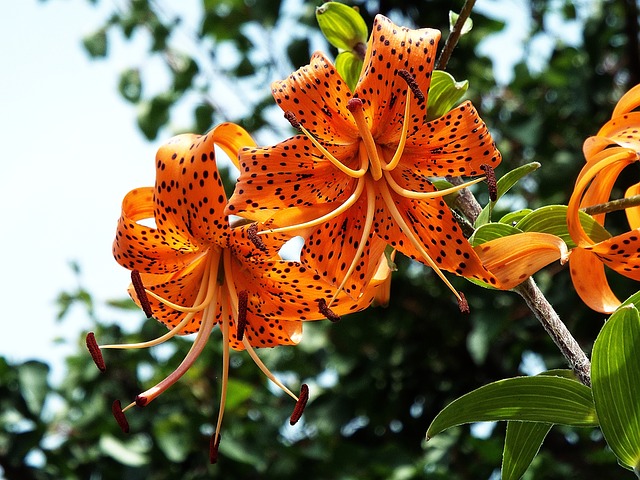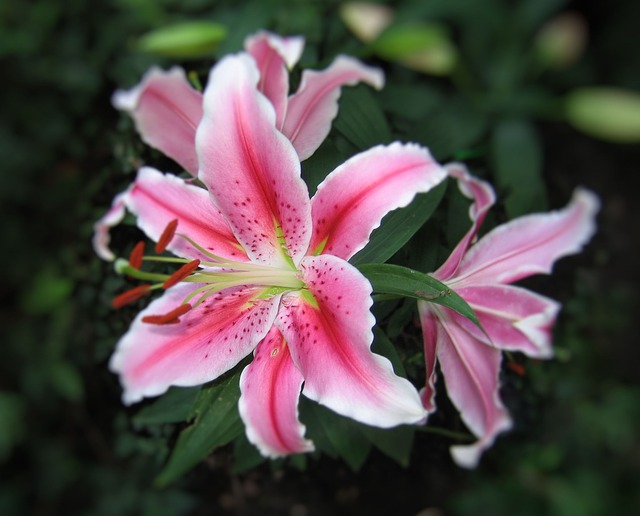Tiger Lily Vs. Day Lily: The Differences Between These Two Popular Flowers!

Do you know the difference between a day lily and a tiger lily? If not, don’t worry, because we’re about to fill you in! In this article, we’ll be discussing the differences between these two popular flowers. We’ll also provide some tips on how to care for each type of flower so that you can enjoy them for years to come!
Table of Contents
Factors that Make Tiger Lily and Daylily
Color and Shape of the Bloom
True tiger lilies have bright orange flowers with black dots on their petals. At the same time, many blooms appear on the top portion of the stem. The color may be slightly more reddish-orange with dark brown spots.
On the other hand, Daylilies are shaped like an open trumpet and face upward. They can be star-shaped, double-flowered, or spider-shaped, and some have flaring or ruffled petals. They may even come in multiple colors, making them even more appealing.
Daylilies are the orange lilies you see growing along roadsides and in ditches. They’re commonly referred to as “ditch lilies.” Even though many people call them tiger lilies anyway, these won’t have the spots that give the tiger lily its name.
Growth Form
An upright stem makes up the body of the tiger lily, which can grow between 3 and 5 feet. The dark green lanceolate leaves shoot out horizontally from the stem and are very long. A lot of older plants have a lot of different branches. Younger plants, on the other hand, have just one branch. There are a lot of fibers in the roots of the plant. They come from the underside of a round bulb. As many as ten flowers can grow around the stamen of each bulb, and each flower will have a single stem and bloom.
Plants that look like grass are called daylilies because they grow in clumps and have leaves that arch out from the base. Depending on the type, the leaves can be dark green or light green, and they can grow up to 24 inches tall, depending on how big they are. Many plants have a lot of flower stalks that grow from the center of the plant. These stalks can be anywhere from 12 to 36 inches tall.
Daylilies also have a different root system. They have more slender roots that are either fibrous, fleshy, or tuberous. They grow more slowly and usually form a group that spreads out. The flowers may only last for one day, depending on the flower.
Flower Comparison
The tiger lily flowers are bright orange and have black dots on the petals. On the top one-third of the stem, there are numerous flowers.
Daylilies have trumpet-shaped flowers with flaring petals that face upward. Ruffled petals, double flowers, and star-shaped or spider-shaped flowers are all features of some cultivars. Daylilies are available in various colors, including yellow, pink, red, purple, and melon. Some flowers come in a variety of colors.
Root Growth
Tiger lily roots are made of fibrous material and come from the bottom of the bulb, which is shaped like a heart.
Daylilies can have slender, fibrous roots, or they can have thick, tube-shaped roots. It’s called the crown because it’s where the roots meet the leaves on daylilies.
Growing Periods
During the winter, tiger lilies die back to the bulb. There are a lot of daylily cultivars that are also dormant in the winter. However, some are semi-evergreen and evergreen.
Growing Conditions
In full sun, both types of lilies can grow. Tiger lilies can also live in woodlands. Daylily flowers with dark colors should have some shade in the afternoon in hot, sunny places in the summer.
They both like well-drained soil, but they can grow in any soil. It likes a lot of water, and once it’s established, daylilies can withstand both drought and heat once they’ve been set up.
Tiger lilies are hardy in USDA plant hardiness zones 4 through 9. Daylilies are also hardy in USDA zones 4 through 9, but there is a lot of variation depending on the kind.
Planting Zone
In USDA zones 4-9, tigers and daylilies are hardy plants. Daylilies may have different zones depending on the type of lilies you buy. When lilies can grow in USDA zone 3, it will be even better!
Garden Use
Tiger lilies give borders and background a more formal look. They also smell good. You can put this plant down in front of tall trees or as a backdrop for plants with shorter flowers.
Daylilies can be used to cover the ground, as borders, edgings, and in rock gardens. They can also be used in large groups to cover the ground. They grow well in small containers.

Planting and Care Tips Differences
Tiger lilies and daylilies both grow from bulbs. How you grow the plants also makes a difference. Both processes are very simple, but the plants are different.
If you want to make more daylilies, you can split an existing plant from its clump of roots when it’s done blooming for the season (mid to late summer). When you use a spade to cut around the clump, you have to lift the plant up to cut it into pieces with a knife. Then, replant the smaller parts of the tree.
There is a small baby bulb in the leaf axil of Tiger Lilies, where the leaves meet the stalk: where the leaves meet the leaves. Plant these bulbs right away in the fall or spring when they’re done growing. It will grow roots this fall, and you’ll have a new plant next year.
Sun Exposure
Both types of lilies thrive in full sun, but tiger lilies can also thrive in woodlands. The partial afternoon sun is ideal when it comes to daylilies with dark-colored blooms.
Planting a day lily or a tiger lily in the partial shade can reduce the number of blooms they produce. But it will lean its long stalk toward the sun to get some sunlight.
Soil
Well-draining soil is important for both lilies, but they can grow in a wide range of organically rich soils. A tiger lily always likes wet soil. A well-established day lily can go without water for a long time. This is because daylilies are more tolerant of heat and dry weather.
Planting Methods
In terms of yard borders or fences, they’re ideal because they’re so tall. This is an excellent choice for planting in front of a large evergreen tree.
Although they are commonly used in rock gardens and roadways, the day lily is a common ground cover. Dwarf varieties are ideal for growing in pots because of their small stature.
Spacing
Due to their clustered roots, daylilies should be spaced at least 24 to 30 inches apart. It’s possible to create an eye-catching display by planting three tiger lilies next to each other.
Watering
Both types of lilies are hardy and do well with a weekly watering rate of about an inch. Tiger lilies may require more attention when it comes to watering.
On the other hand, Daylilies are better able to withstand periods of drought. However, a mild drought can cause some flower buds to fall in either type of plant. On the other hand, Daylilies may begin to rot if the soil is kept too wet.
Mulching
Mulching your garden in the spring can help any lily type conserve water. Mulch made from organic materials is a great way to jump-start a garden’s growth early in the season because it’s rich in nutrients.
Fertilizing
When they produce the most blooms in the spring and summer, they fertilize both types. No fertilizer is required the first year, but you should plan on fertilizing the plants every year after that.
Expect Tiger lilies to go dormant in the fall as they die back to the bulb to prepare for the colder months ahead. The majority of day lily varieties go dormant in the winter, but a few remain green.
Cut back lilies in the fall, and only use sterile pruning tools. The dry flower stems should be cut back after the plants have finished flowering for the winter to keep the plants looking tidy for the following year. The stalk of a tiger lily needs to be cut back just below the cluster of flowers. Allowing the stalk to die down will encourage the leaves to store food for the following year.
Deadheading and Storing
Deadheading the blooms on older plants may be necessary to encourage the growth of new, healthy flowers. In contrast to most plants, which produce multiple buds and blooms simultaneously, hybrid varieties may self-de-head.
However, to collect and replant tiger lily seeds, you should avoid deadheading your tiger lily in the fall. Replanting the bulbils of your lily can be done in a variety of ways, including directly planting them into your garden soil or refrigerating them for a month before starting the seeds indoors.

